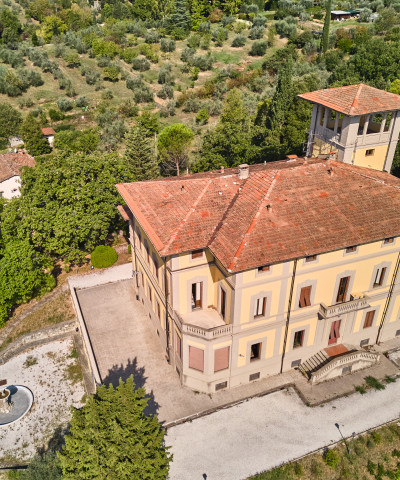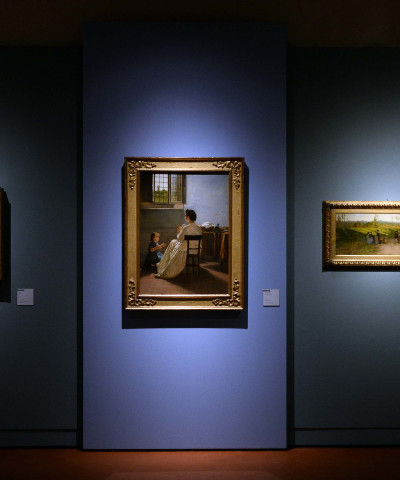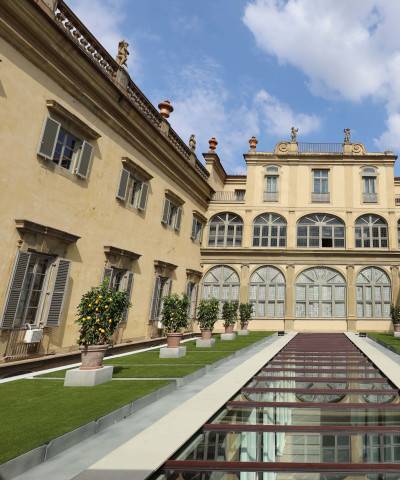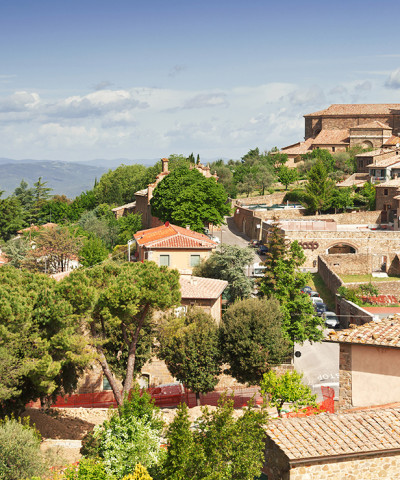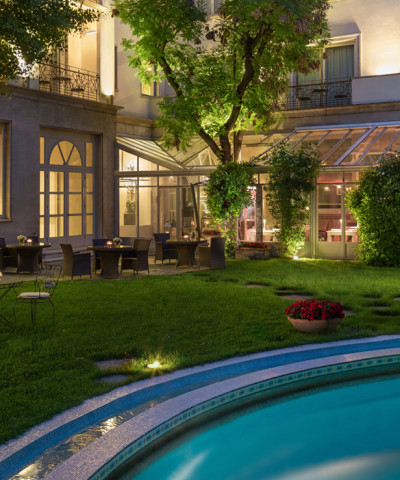Everything you still don't know about Palazzo Blu
History, current, past and permanent exhibitions of the former noble palace
Palazzo Blu is the centre for temporary exhibitions and cultural activities in Pisa. Managed by the Pisa Foundation, it is located in the very centre of the city and hosts various exhibition spaces, an auditorium, three areas for permanent exhibitions (the Foundation's art collections; the historic residence and the Simoneschi Collection) and Le Fondamenta, a new section dedicated to archaeology and medieval history.
HISTORY
The history of Palazzo Blu dates back to the 11th century, the period of maximum power of the Maritime Republic of Pisa and during which the first settlements took place. Strategically located, it stood, and still stands today, at the beginning of what is now called Ponte di Mezzo and next to the palace of one of the city's most important families, the Gambacorta family, which is now the seat of the City Council. Over the following centuries, the residence underwent various modifications and renovations and in the Middle Ages it belonged to various noble families and to the first and last 'Doge' of Pisa, Giovanni dell'Agnello. The colouring of the palace dates back to the mid-18th century, perhaps to accommodate guests from St. Petersburg. Restorations began in the late 18th century and have continued to the present day. The last major intervention, the addition of a wing towards the east by the then owner Domenico Giuli, dates back to the years following the Unification of Italy. In 2001, Palazzo Blu was then purchased by the Fondazione Pisa, formerly known as the Fondazione Cassa di Risparmio di Pisa, which has made it a space open to the public since 2008. In 2007, restoration and recovery works were completed, which made it possible to improve the palace but also to maintain it with its existing structures. Following the replacement of the most time-worn materials and the addition of lifts and stairs, the building has been divided into areas for different functions: the main structure is used for the permanent exhibition of the art collections on the second floor; the noble residence and the Simoneschi Collection are on the first floor. Finally, a more recent section dedicated to archaeology and medieval history is located in the basement and an additional space for various uses in the attic. A total of 800 square metres of exhibition space, where attention has been paid to the smallest details thanks to sophisticated hydraulic and mechanical systems (air exchange, temperature control, etc.). The colour of the palace, to which it owes its name, has been maintained with the "a fresco" technique typical of those centuries.
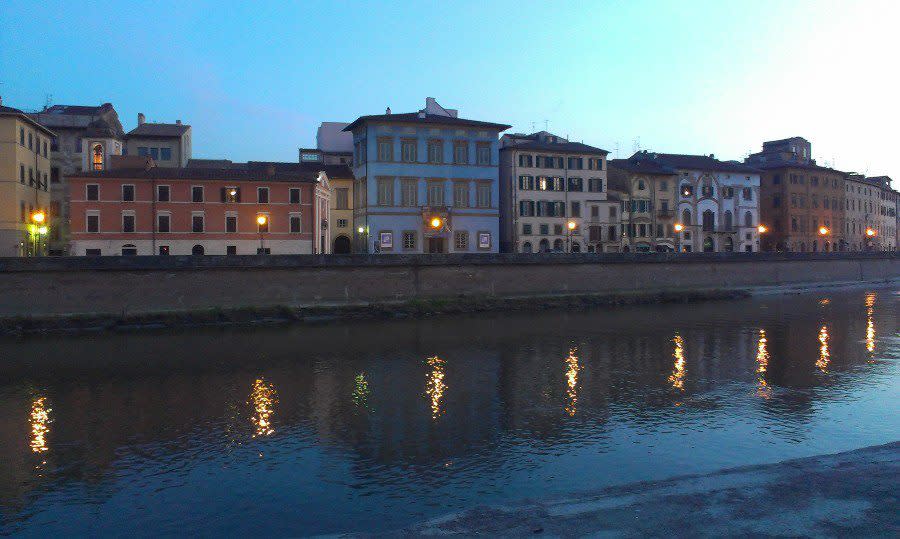 Palazzo Blu
Palazzo Blu EXHIBITIONS
There are many exhibitions curated and hosted at Palazzo Blu. Let us now take a look at the permanent, current and past exhibitions that have most attracted tourists from all over the world.
Permanent
The permanent exhibitions in Palazzo Blu are the property of the Pisa Foundation, which has acquired individual works or entire collections on the basis of their link with the Pisan territory. The works are distributed in the different rooms on the various floors of the Palazzo. Starting from the second floor, which is the one recommended as the beginning of the exhibition itinerary, we can find paintings from the 16th to the 18th century placed in chronological order; on the first floor, on the other hand, we find works from the Simoneschi collection from the 15th to the 20th century and the original works of the Palazzo arranged to reconstruct a 19th-century noble residence. Finally, in the basement there are three rooms displaying archaeological finds from the restoration of the Palazzo and neighbouring structures. During the year, then, in other rooms distributed over the two floors, major autumn and spring exhibitions are organised, including monographs by international artists with a scientific or historical theme.
Ongoing
The Avant-gardes: masterpieces from the Philadelphia Museum of Art: The masterpieces of the 20th-century Avant-gardes are the protagonists of the exhibition that from 28 September to 7 April 2024 brings an extraordinary sequence of paintings and sculptures from the collections of the Philadelphia Museum of Art to the rooms of Palazzo Blu. The exhibition is a unique opportunity to admire some of the absolute landmarks of European art from the first decades of the 20th century: works by Chagall, Dali, Duchamp, Kandinsky, Mirò and Picasso are on display. In addition to these, there are also extraordinary works by Matisse, Mondrian, Klee, Ernst and Gris, artists who have never before been exhibited in the art palace overlooking the Lungarno.
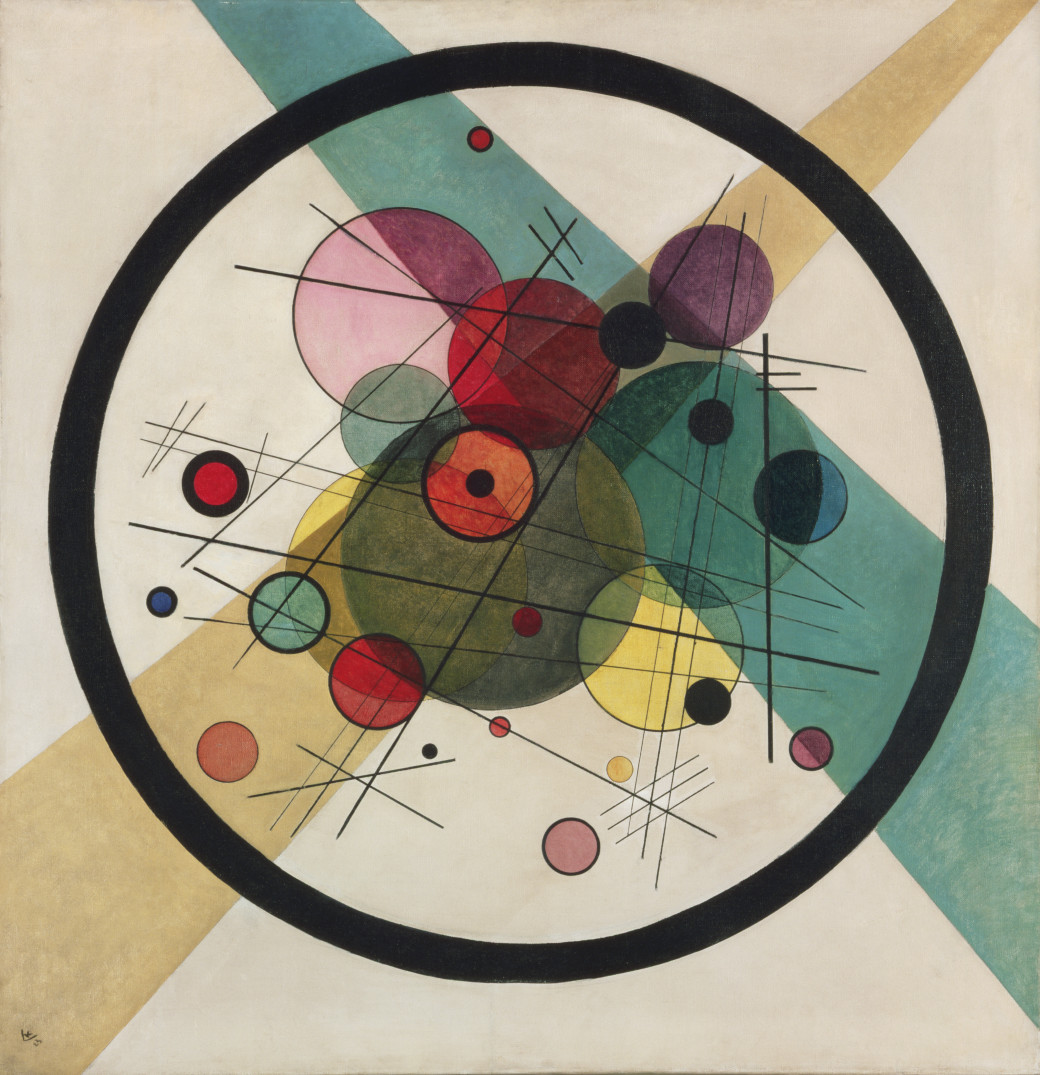 Kandisky Circles in a circle
Kandisky Circles in a circlePast
The Macchiaioli: Until 26 February 2023 a major retrospective with over 120 works from major museums and private collections. The exhibition, divided into 11 sections, recounted the adventure of a group of young progressive painters, both Tuscan and non-Tuscan, who - eager to distance themselves from the academic institution in which they had been trained, under the influence of important masters of Romanticism such as Giuseppe Bezzuoli and Francesco Hayez - soon came to write one of the most poetic and daring pages in the history of art, not only Italian.
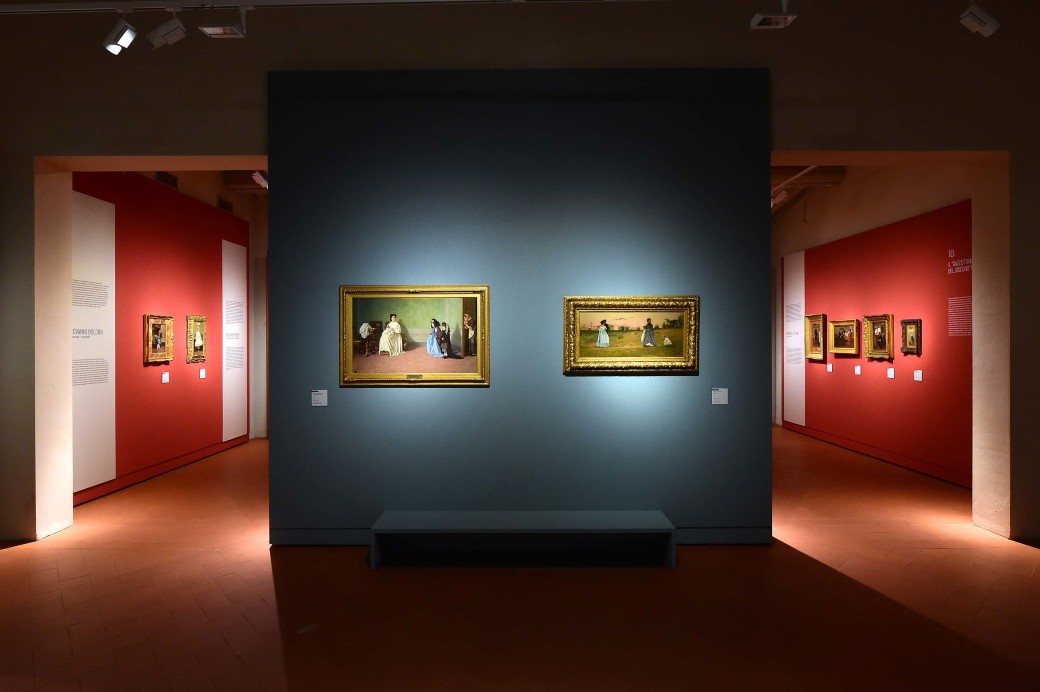 Macchiaioli
Macchiaioli Keith Haring: from 12 November 2021 to 17 April 2022 the Keith Haring exhibition was held, organised by the Pisa Foundation in collaboration with MondoMostre and with the extraordinary participation of the Nakamura Keith Haring Collection, curated by Kaoru Yanase, Chief Curator of the Nakamura Keith Haring Collection. The exhibition paid homage to the American artist, universally recognised as one of the fathers of street-art, who stayed in Pisa in 1989 to paint the famous mural Tuttomondo on a wall of the convent of S. Antonio.
 Keith Haring
Keith HaringGiorgio de Chirico e la pittura metafisica: The exhibition De Chirico e la Metafisica (De Chirico and Metaphysical Art) took place from 7 November to 9 May 2021, displaying paintings and drawings from the artist's personal collection for the first time in Tuscany. The exhibition recounted the work of the Pictor Optimus in a long journey through images and words, a navigation made up of departures and returns throughout the 20th century, leaving deep traces that can still be perceived.
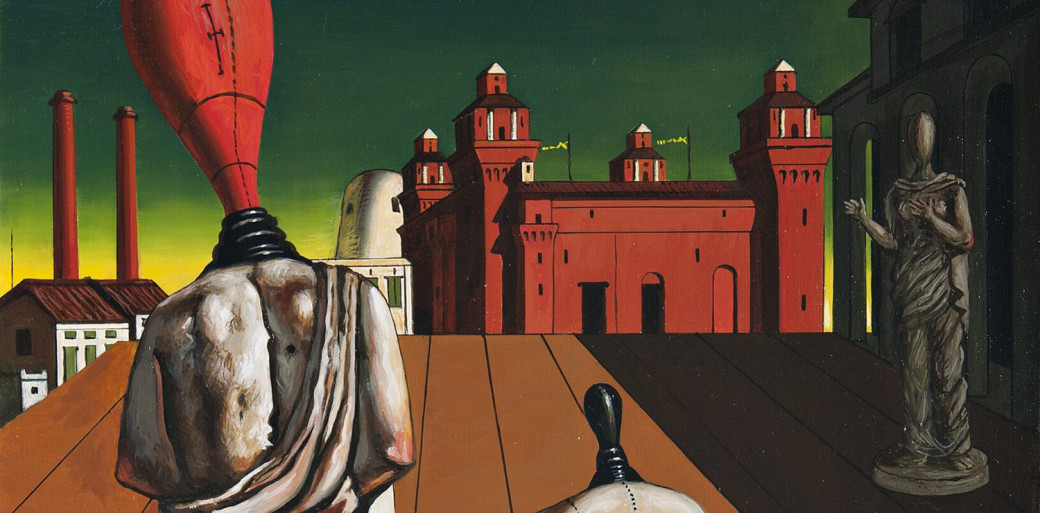 Dechirico
DechiricoFuturismo: 2019 saw an exhibition dedicated to the most original movement of the 20th century, Futurism, founded by Filippo Tommaso Marinetti thanks to the famous 1909 Manifesto. The exhibition, with more than 100 works, aimed to retrace some of the movement's most significant manifestos in ten sections, starting with the first artists such as Boccioni and ending with Balla, Benedetta Cappa Marinetti, Depero, Gerardo Dottori, Fillia, Marinetti, Prampolini, Mino Somenzi and Tato, signatories of the aeropittura manifesto.
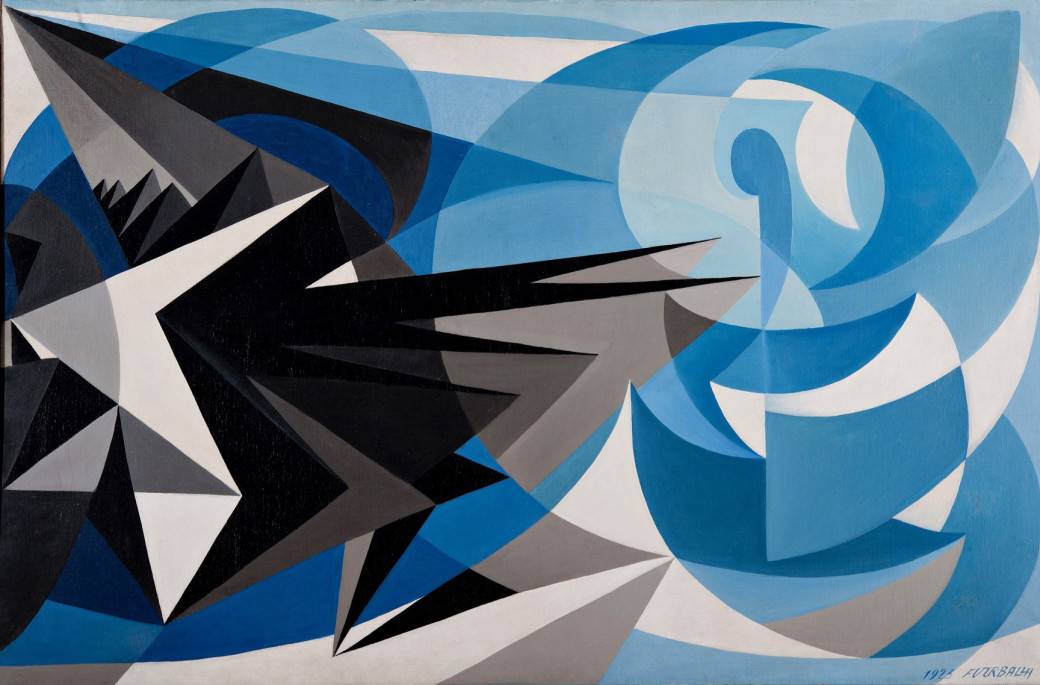 Balla Giacomo - Pessimismo e ottimismo
Balla Giacomo - Pessimismo e ottimismoIl sogno del classico: In 2016, the exhibition dedicated to Salvador Dali featured a selection of 150 works. The aim was to show the Italian artistic tradition, in particular the Renaissance, that the artist brings to his paintings. In fact, the exhibition presented a less famous Dali illustrating great authors such as Dante, Cellini and Michelangelo.
Marc Chagall e il Mediterraneo: It is 2009 and Palazzo Blu is hosting the first exhibition dedicated to the 20th century artist. Usually dark and cold, Chagall's works are transformed once he arrives in Europe. Retaining his Jewish and Russian origins, the artist created works inspired by the warm and bright lands kissed by the Mediterranean.
Andy Warhol. Una storia americana: one of the greatest American artists comes to Pisa in 2013 with an exhibition that expresses the artist's journey in all its forms. "I love America... It is a materialisation of everything that can be bought and sold, of the concrete but ephemeral symbols that make us live." Wharol's portrayal of America and its facets made him one of the world's most famous pop artists: from Brillo Box to Marilyn Monroe, there are many self-portraits on display in the specially designed rooms.
 Andy Warhol e la New Pop
Andy Warhol e la New Pop Joan Mirò. I miti del Mediterraneo: An exhibition was dedicated to the artist in 2010, describing his deep connection with the land, with popular tradition, with myths from people's stories and with a Mediterranean conceived as a lyrical place. The itinerary consisted of canvases and sculptures that demonstrate the process of discovery defined as fruitful by the artist, who stated that 'the painting must fertilise the imagination'.
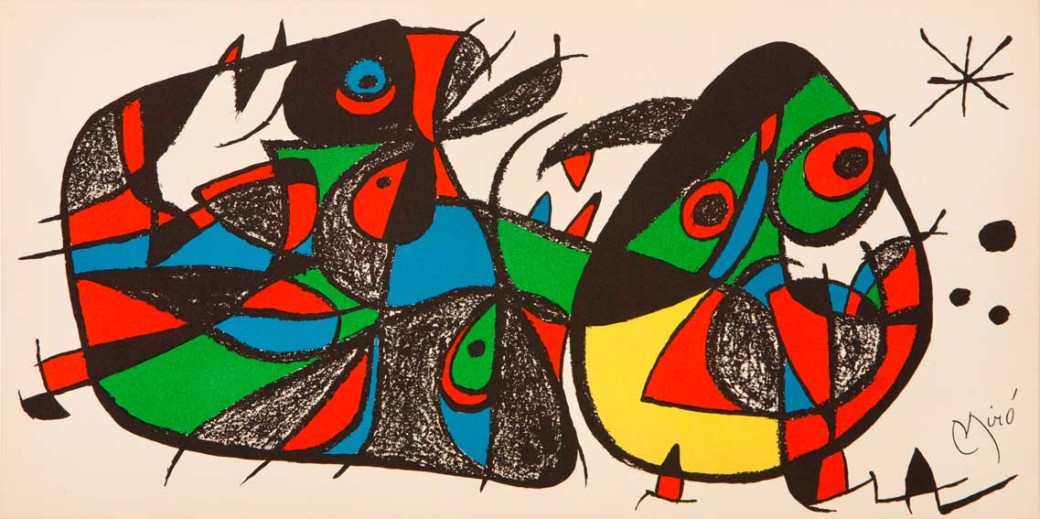 Joan Mirò
Joan MiròKandinsky from Russia to Europe: 'I found myself surrounded on all sides by Painting: as if I myself had penetrated Painting'. These are the words of the artist once he arrived in Russia. Kandinsky wanted to make people experience his paintings as if they were inside them and this was the aim of the Palazzo Blu exhibition dedicated to him in 2012. Between nature, enchanted fairy tales, colours and shapes, the exhibition transported the visitor into the world of the artist who nostalgically recalls his trip to Russia.
Picasso. Ho voluto essere pittore e sono diventato Picasso: the exhibition is dedicated to one of the most revolutionary artists of the 20th century. Palazzo Blu wanted to honour Picasso in 2011 with an exhibition highlighting his creative journey through works created in different styles and techniques. Famous for his periods, Picasso also dabbled in ceramic works and linoleum engravings, some of which were present at the exhibition.
Toulouse Lautrec. Luci e ombre di Montmartre: during his short but intense life, the artist carefully observed the world around him, not least because of a disability that affected him from birth and precluded him from living a normal life. It is precisely on these observations that the exhibition dedicated to him in 2015 is based, a series of works recounting the variety of the Montmartre district, where he himself lived, among cafés, concerts, theatres and brothels.
Amedeo Modigliani. Et ses amis: remaining in the same year as the previous exhibition, 2015, Palazzo Blu hosted an exhibition dedicated to Amedeo Modigliani, featuring works that portrayed the atmosphere of early 20th century Parisian culture. The exhibition also included rooms dedicated to the relationship the author had with other artists such as Brancusi or Picasso.
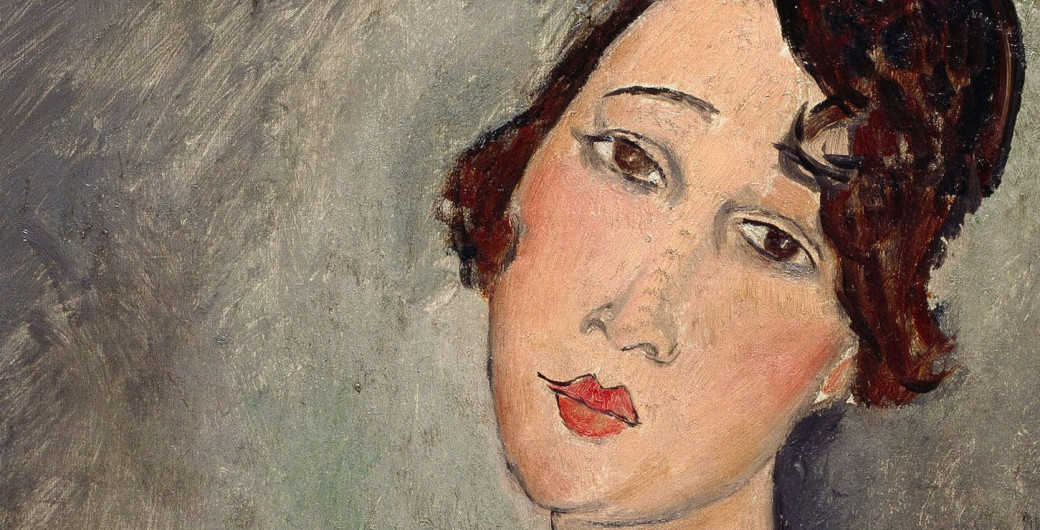 modigliani
modiglianiEscher. Oltre il possibile: one of the most recent exhibitions at Palazzo Blu was dedicated to the great Maurits Cornelijs Escher. A Dutch explorer, the artist, after returning to his motherland from his travels, continued to explore a world that went beyond knowledge between nature, geometry, culture, deception, games of reflexes and what have you. All this, his entire essence, was expressed in the various rooms of the exhibition dedicated to him in 2017.
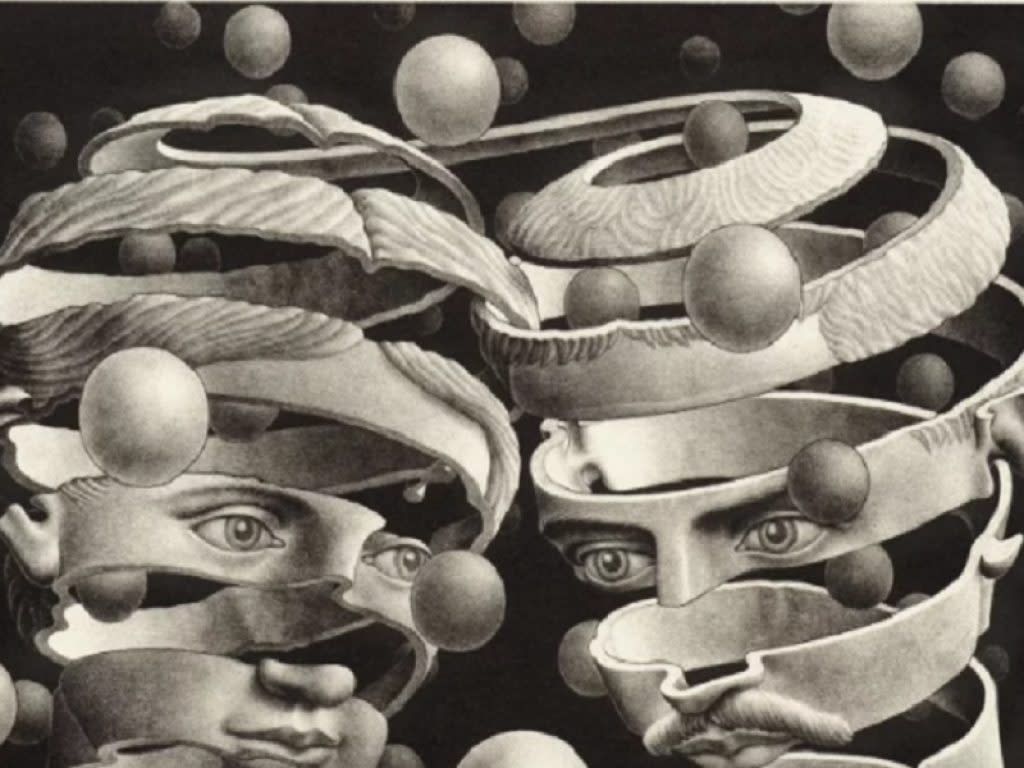 escher
escher










